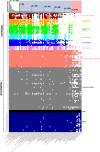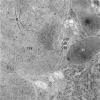How do bacterial endosymbionts work with so few genes?
- PMID: 38626194
- PMCID: PMC11020763
- DOI: 10.1371/journal.pbio.3002577
How do bacterial endosymbionts work with so few genes?
Abstract
The move from a free-living environment to a long-term residence inside a host eukaryotic cell has profound effects on bacterial function. While endosymbioses are found in many eukaryotes, from protists to plants to animals, the bacteria that form these host-beneficial relationships are even more diverse. Endosymbiont genomes can become radically smaller than their free-living relatives, and their few remaining genes show extreme compositional biases. The details of how these reduced and divergent gene sets work, and how they interact with their host cell, remain mysterious. This Unsolved Mystery reviews how genome reduction alters endosymbiont biology and highlights a "tipping point" where the loss of the ability to build a cell envelope coincides with a marked erosion of translation-related genes.
Copyright: © 2024 McCutcheon et al. This is an open access article distributed under the terms of the Creative Commons Attribution License, which permits unrestricted use, distribution, and reproduction in any medium, provided the original author and source are credited.
Conflict of interest statement
The authors have declared that no competing interests exist.
Figures




Comment in
-
Symbiosis: In search of a deeper understanding.PLoS Biol. 2024 Apr 12;22(4):e3002595. doi: 10.1371/journal.pbio.3002595. eCollection 2024 Apr. PLoS Biol. 2024. PMID: 38635919 Free PMC article.
References
MeSH terms
LinkOut - more resources
Full Text Sources

